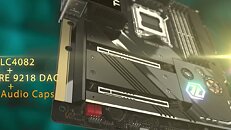Phison Showcases 12 GB/s Speeds for PCIe 5.0 SSDs Through Its New E26 Controller
Phison has showcased the expected performance of its upcoming PS5026-E26 controller, built to usher NVMe SSDs into the PCIe 5.0 realm. The company showcased its new controller's prowess by building a reference SSD design based on 1 TB of Micron's TLC NAND. Phison's new controller has been built from the ground-up to accelerate next-generation SSD workloads - including direct access technologies based on Microsoft's DirectStorage API, accelerated by two ARM Cortex-R5 cores and three proprietary CoXProcessor 2.0 accelerators built on TSMC's 12 nm process.
Phison's internal testing shows its reference SSD achieving sequential read speeds of over 12 GB/s in CrystalDiskMark, with sequential writes going as high as 10 GB/s - a 70% performance increase compared to the world's fastest PCIe 4.0 SSDs, which currently top out at around 7 GB/s sequential speeds. As to 4K performance, one of the most tangible metrics for user experience, random reads are set at around 16.000 IOPS, showcasing room for improvement with further firmware optimizations for actual shipping products.
Phison's internal testing shows its reference SSD achieving sequential read speeds of over 12 GB/s in CrystalDiskMark, with sequential writes going as high as 10 GB/s - a 70% performance increase compared to the world's fastest PCIe 4.0 SSDs, which currently top out at around 7 GB/s sequential speeds. As to 4K performance, one of the most tangible metrics for user experience, random reads are set at around 16.000 IOPS, showcasing room for improvement with further firmware optimizations for actual shipping products.

















































